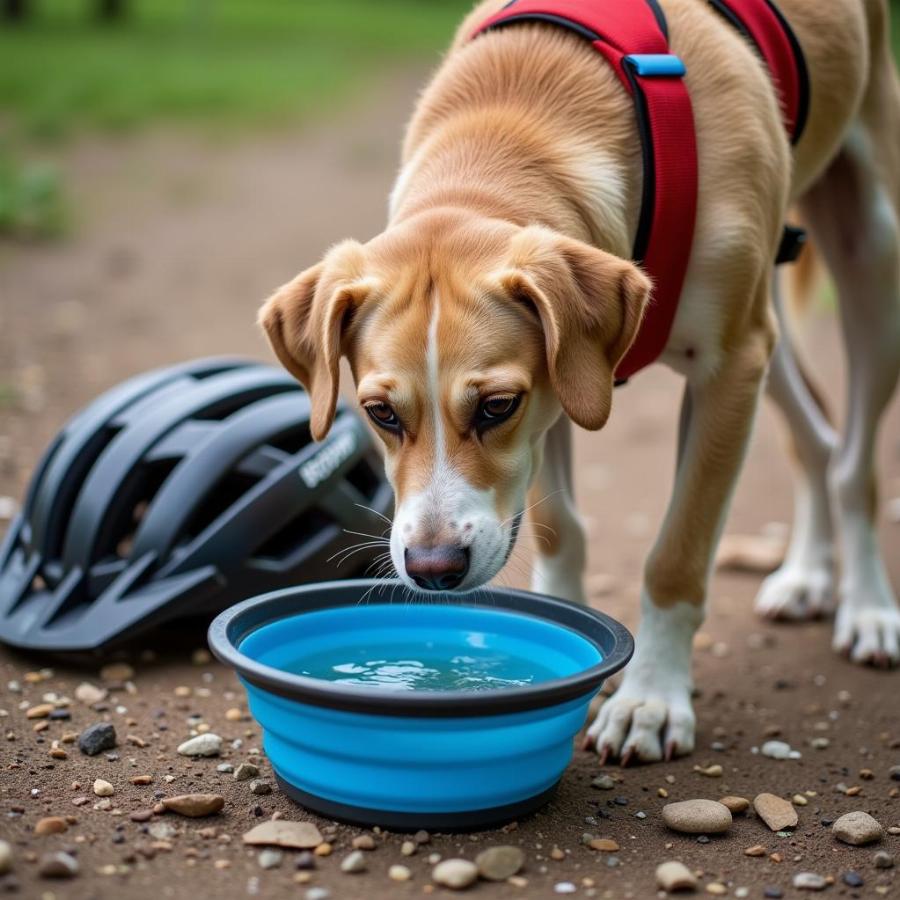Cycling with your furry friend can be an exhilarating experience for both of you. However, ensuring a safe and enjoyable ride requires careful planning and consideration. From choosing the right gear to training your dog, this guide will equip you with everything you need to know about riding a bike with your dog.
Gearing Up for Success
Before you hit the road, it’s essential to invest in the right gear for both you and your companion:
- Bike Attachment: Never ride with your dog off-leash. A bike leash attachment, such as a Walky Dog bike leash or a Springer, attaches to your bike frame and provides a secure connection point for your dog’s leash, preventing them from getting tangled in the wheels.
- Harness: A well-fitted harness is crucial for distributing pressure evenly and preventing choking. Avoid attaching the leash to your dog’s collar as it can cause neck injuries. Opt for a harness specifically designed for cycling, with padding and multiple adjustment points.
- Reflective Gear: Enhance visibility during early morning or evening rides with reflective vests for both you and your dog. Attaching reflective tape to your bike and leash also improves visibility for motorists.
Training Your Canine Cyclist
Just like any new activity, gradual introduction and consistent training are key to a successful bike riding experience with your dog:
- Basic Obedience: Ensure your dog has a solid foundation in basic commands like “heel,” “stop,” and “stay.” This will make it easier to control their movements while riding.
- Leash Training: Acclimate your dog to walking politely on a leash, staying by your side without pulling or lunging. Start with short walks and gradually increase the distance and duration.
- Bike Introduction: Before your first ride, allow your dog to sniff and investigate the bike. Gradually desensitize them to the sound and movement by walking alongside the bike while gently rolling it.
- Start Slow: Begin with short, slow rides in a familiar, low-traffic area. As your dog gains confidence and stamina, you can gradually increase the distance and speed.
- Positive Reinforcement: Reward your dog with praise, treats, and breaks throughout the ride to keep them motivated and reinforce positive behavior.
Safety First: Essential Tips for Riding With Your Dog
-
Health Check: Consult your veterinarian to ensure your dog is physically fit for cycling. Certain breeds and dogs with health conditions may not be suitable for this activity.
-
Hydration is Key: Carry sufficient water for both you and your dog, especially during warmer weather. Use a collapsible bowl for easy hydration on the go.
-
Avoid Extreme Weather: Avoid cycling in extreme heat, cold, or humidity, as these conditions can be dangerous for your dog. Opt for cooler times of the day and monitor their behavior closely.
 Dog Drinking Water From Collapsible Bowl on Bike Ride
Dog Drinking Water From Collapsible Bowl on Bike Ride -
Be Mindful of Surroundings: Pay close attention to your surroundings, including traffic, pedestrians, and other animals. Keep your dog on a short leash and be prepared to stop or maneuver quickly if needed.
-
Know When to Stop: If your dog shows signs of fatigue, stress, or overheating, such as excessive panting, lagging behind, or stopping frequently, take a break, offer them water, and consider shortening the ride.
Choosing the Right Bike and Riding Style
The type of bike and riding style you choose can impact your dog’s safety and enjoyment:
- Bike Type: Mountain bikes or hybrid bikes offer stability and control on various terrains. Road bikes, while fast, may not be suitable for riding with a dog due to their lightweight frames and narrow tires.
- Riding Style: Maintain a moderate and consistent pace while cycling with your dog. Avoid sudden accelerations, sharp turns, and riding in crowded areas, which can be disorienting and stressful for your furry co-pilot.
Expert Insights
“Remember, every dog is different,” says renowned veterinarian Dr. Emily Parker. “It’s crucial to assess your dog’s individual temperament, fitness level, and comfort level before embarking on cycling adventures together. Prioritizing their safety and well-being should always be paramount.”
Conclusion
Riding a bike with your dog can be a fantastic way to bond with your furry friend while enjoying the outdoors together. By following these tips and prioritizing safety, you can ensure a fun and memorable experience for both of you. Remember to start slow, be patient, and cherish the joy of sharing the open road with your canine companion.
FAQs
Q: What age can I start cycling with my dog?
A: It’s best to wait until your dog is fully grown, typically around one year old, before introducing them to cycling to avoid stressing their developing joints.
Q: What breeds are not suitable for cycling?
A: Brachycephalic breeds, such as Bulldogs and Pugs, with short snouts may have difficulty breathing during strenuous activity and are generally not recommended for cycling.
Q: What should I do if my dog pulls on the leash while cycling?
A: Stop cycling immediately and have your dog sit or lie down until they calm down. Resume riding once they are relaxed and walking politely beside you. Consistent training and positive reinforcement will help discourage pulling.
Explore More:
- Learn more about dog training tips on our website.
- Discover the best dog harnesses for safe and comfortable cycling.
Beaut Dogs is your trusted source for all things dog-related. We provide valuable information, resources, and expert advice to help you care for your canine companion. If you need personalized assistance, please don’t hesitate to contact us at [email protected]. Let Beaut Dogs guide you on your journey to becoming the best dog parent you can be!